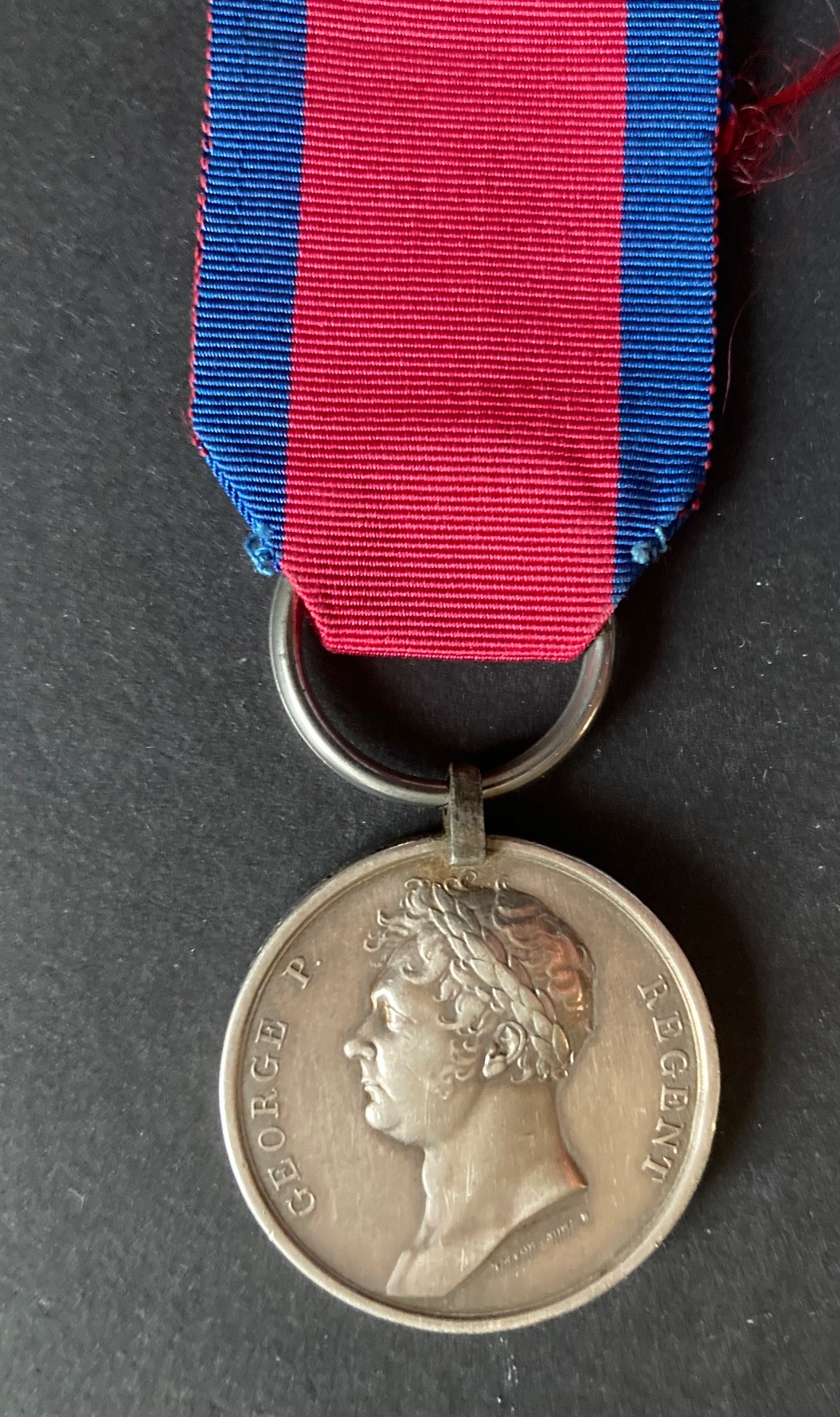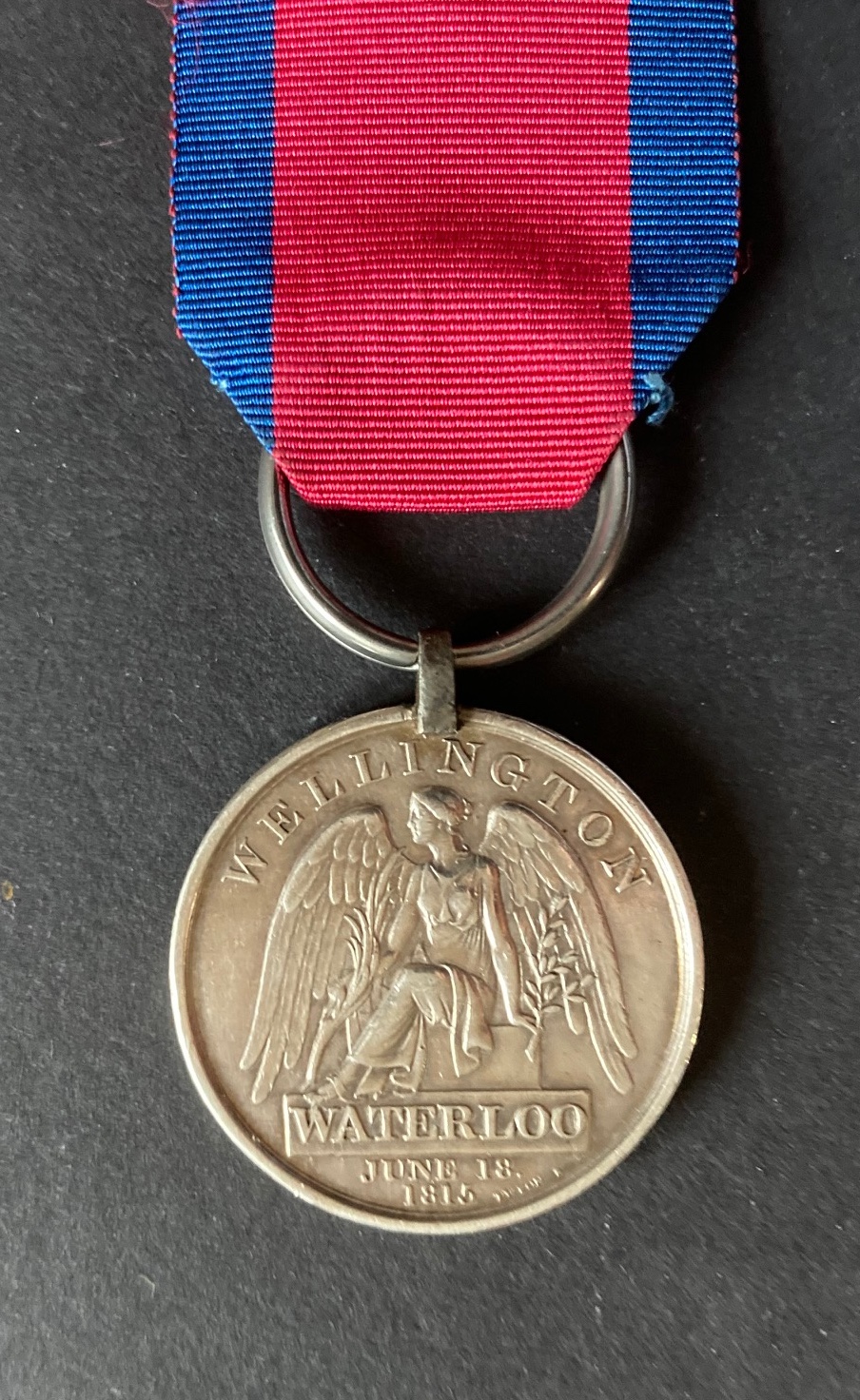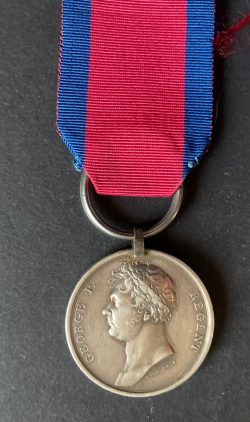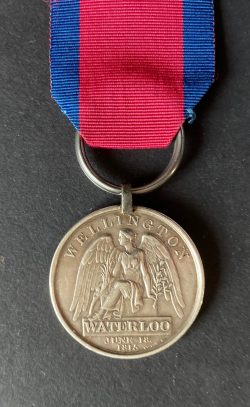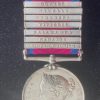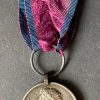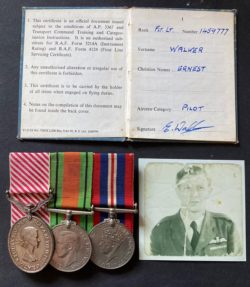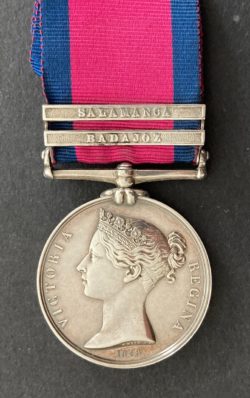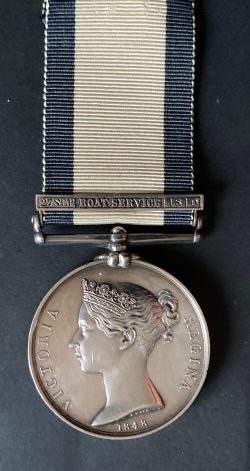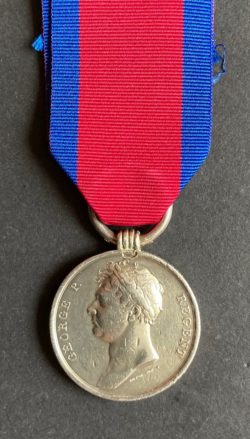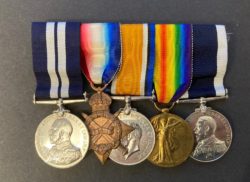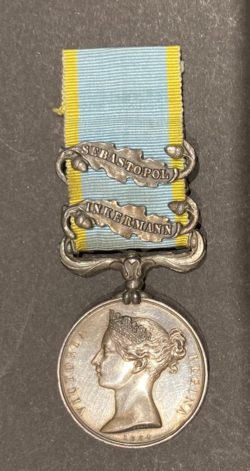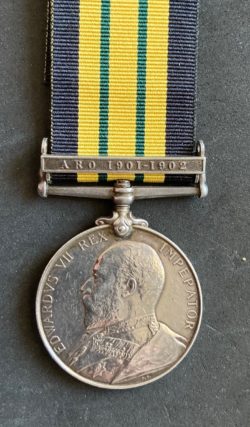Subtotal: £1,400.00
Waterloo , 1st. Reg.Dragoon Guards. killed in action Waterloo. A rarity. whilst provision was made for family of those killed to claim the requirements resulted in very few actually sent out
£4,500.00
1 in stock
Waterloo 1815
James Buxton, 1st Reg. Dragoon Guards
Killed in action , Waterloo, 18 June, 1815
Confirmed o the muster roll
James Buxton was born at Ashover, Derbyshire in 1793, trade Labourer and saw service with the Norfolk Fencible Cavalry. He later joined the King’s Dragoon Guards – appearing on their paylist on 25 December 1814 with 1 Troop – with whom he served under the command of Captain William Elton’s at the Battle of Waterloo.
Contrary to the original intention and popular belief, the Waterloo Medal was not generally issued to the next of kin of those who were killed in action or who had died from their wounds in the Waterloo Campaign. On 5th July 1816 Sir Henry Torrens wrote from Horse Guards to Pole: “I enclose you a List of the Staff and Regimental Officers who were killed at the Battle of Waterloo as well as those who died of their wounds, in order that Medals may be struck and presented to their nearest Relatives…”. Five days later, on 10 July, Pole’s deputy Morrison replied to Torrens: “I am directed by the Master of the Mint to acknowledge the receipt of your letter of the 5th instant, enclosing a list of the General and Staff Officers killed at the Battle of Waterloo, as well as those who have died of their wounds, in order that Medals may be struck for their relatives; and I am to inform you that in consequence of the very greatest importance of giving all possible dispatch to the new Silver Coinage, every part of the Machinery and Apparatus of the Mint, as well as the whole time and labour of the Officers & Workmen, are fully applied to the business and that the least delay to the Coinage would be of the greatest detriment to the Public Service. It is therefore very desirable that the striking of the Medals for the deceased Officers and other ranks, as well as for the Regiment of the 1st Hussars King’s German Legion (the List of which has been omitted) should, for the present, be suspended. Copies of the names will, in the mean time, be prepared so that, as soon as opportunity occurs, the Mint may resume the operation of striking the Medals”.
For the next ten years a small number of requests for medals from informed relatives of all ranks of the fallen were made to the Commanding Officers of the units concerned who, after agreeing with the merit of a specific claim, would then refer the case to Horse Guards. Each successful request was then passed to the Royal Mint for action, accompanied by an ‘unappropriated Medal’ taken from the Horse Guards’ mountain of ‘returns’ which included duplicates, errors and unissued deserters’ medals.
It would appear that the Colonel of the King’s dragoon Guards for one saw the right in claims originating from the next of kin. In addition to James Buxton at least three medals have appeared on the market being to :
Thos Warburton
John Tebbs
Thos Ashworth
At the Battle of Waterloo, the King’s Dragoon Guards were part the Union Brigade, which made a charge on two regiments of French Cuirassiers and massed troops of d’Erlons infantry corps at about 2.30pm. The Union Brigade attacked sweeping away the Cuirassiers, and scattering the retreating I Corps into the valley below Mont St. Jean. This charge captured 2000 prisoners and two French Eagle standards.
However, the soldiers of the Union Brigade charged too far, pursuing the infantry right up to the French cannons on the opposite ridge. A British Major, De Lancey Evans explained that he and “all the officers of any discretion” tried to order their troops to turn back, but were ignored by their blood-crazed men. Scattered and with their horses exhausted from galloping across the valley, the Union Brigade were caught by the French lancers, who inflicted terrible casualties. At least 2,400 French soldiers on horseback, armed with lances and swords, inflicted severe casualties. The King’s Dragoon Guards suffering some 279 in killed or wounded, including the commanding officer Lt. Colonel Fuller.
Sergeant Major Page later wrote
‘We overturned everything, both cavalry and infantry, such cutting and hacking never. was before seen. When the French lines broke and ran, our Regiment being too eager, followed the French cavalry while the cannon and musketry sweeping our flank. Many fell and our ranks suffered severely…..of the French wearing armour, very few left the field. They were fine men but could not look us in the face, and dreadful was the havoc we made among them.’
Lieutenant John Hibbert
‘Our Brigade , never having been of service before, hardy knew how to act. They knew how to charge, but never thought about stopping at a proper time.’
Captain Naylor
‘Our attack was almost completely successful, but our men were too sanguine in the pursuit of the fugitive Cuirassiers and at the moment our horses were blown, we were attacked by a multitude of Lancers who did us considerable injury.’
A rarity
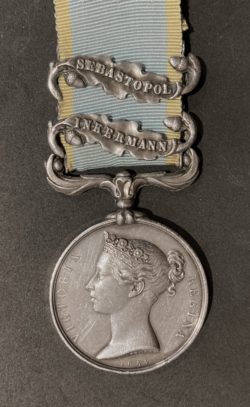 Crimea, 2 clasps, Inkermann, Sebastopol, officially impressed, Killed in action, 9th November, 1854 as A.B. H.M.S. Rodney, a rare Naval Brigade casualty
Crimea, 2 clasps, Inkermann, Sebastopol, officially impressed, Killed in action, 9th November, 1854 as A.B. H.M.S. Rodney, a rare Naval Brigade casualty 